I spent an unforgettable three months backpacking Bolivia.
Bolivia is one of the cheapest countries in South America for backpackers – particularly compared to its neighbours in Chile and Argentina. Many visitors travel Bolivia for the Salt Flat deserts, the witches markets in the breathlessly high city of La Paz, and the mysterious Lake Titicaca – the world’s highest navigable lake.
But there’s so much more to see in Bolivia.
I chose to spend three months backpacking Bolivia, and my Bolivia itinerary was scattered and circuitous. I volunteered in La Paz, fell in love in Sucre, drank local wine in Tarija and stepped inside dinosaur footprints in Parque Torotoro. I danced under the full moon beside Illimani mountain and lived in a tiny village without running water. I hugged llamas beside the highest lake in the world and slept within walls made of salt.
When I think back to the three months I spent backpacking Bolivia, it’s just as easy to remember tiny moments and details. Crisp blue skies. Brightly patterned textiles. Sunburnt cheeks. I remember chewing coca leaves to alleviate the light-headed sensation I felt in high altitude. I remember queuing for breakfast at Sucre’s Mercado Central each morning, squashing onto a plastic stool to eat papa rellena with a chipped spoon.
Whether I was travelling in cities, villages, canyons, deserts or worryingly rickety buses, I found Bolivia to be one of the most fascinating, frustrating, hilarious, eye-opening countries I’ve ever travelled through.
To put it simply, Bolivia is an incredible place.
Quick links:
– Things to know about backpacking Bolivia –
Weather in Bolivia / Best time of year to visit Bolivia / Food in Bolivia / Politics in Bolivia / Safety in Bolivia / Travel insurance in Bolivia / Water sanitation in Bolivia / Speaking Spanish in Bolivia
– Travelling around Bolivia –
Transport in Bolivia / Bus routes in Bolivia / Hostels in Bolivia /
Entering & leaving Bolivia / Visas for Bolivia
– Where to go in Bolivia? –
La Paz / Sucre / Tarija / Potosi / Tupiza / Salar de Uyuni Salt Flats / Cochabamba / Torotoro National Park / Copacabana, Lake Titicaca / Isla del Sol
Things to know about backpacking Bolivia
What’s the weather in Bolivia like?
Because much of Bolivia is at a high elevation, it’s hot in the fierce daytime sun and cold at night. That means plenty of suncream and plenty of layers! It’s also advised to carry a waterproof because the weather can turn pretty quickly.
What’s the best time of year to visit Bolivia?
Most recommend the dry winter season of May-October for travelling in Bolivia, as opposed to the rainy summer season of September-March.
I didn’t know this beforehand, so I was travelling in Bolivia between September and December; the tail end of the cooler months, transitioning into spring. That said, the altitude affects everything: September in La Paz (altitude of 3,640m) was warm in the bright sun but chilly in the shade. My next month in Sucre felt like constant springtime, despite being October, and the tail end of the year ranged from freezing (Potosi, at 4,067m) to balmy (Tarija at 1,866m).
Some destinations, like the Salar de Uyuni, can change drastically depending on the time of year. If you visit in March/April you’re most likely to catch the ‘mirror effect’, when high rainfall allows the Salt Flats to reflect the sky. However, that same rain also makes it harder to visit Fish Island. Most people visit the Salar de Uyuni between May and October – lots of sun, and not much rain.

What food can I eat in Bolivia?
For a country highly focused on grains and potatoes, I still really enjoyed the food in Bolivia – although if you’re vegetarian then it might require some research. That’s because, as in most of South America, meat is a staple part of most plates of Bolivian food, and asking for a meal without meat will often confuse people.
Here are some of my favourite typical Bolivian foods:
Salteñas – little hard pastry shells filled with meat, vegetables and gravy, which you can buy at the side of the road. The gravy inside has a tendency to spill everywhere, so the trick is to bite off the top then drink the gravy before eating the rest.
Papas rellenas – a ball of fried mashed potato with egg, meat or vegetables in the centre, topped with spicy onion and tomato sauce. Because it needs to be eaten from a bowl, papas rellenas is usually bought and eaten at a market, where you’ll squash onto a plastic stool amongst the other customers and hand back your bowl when you’ve finished.
Tucumanas – these deep-fried pastries are the larger version of a salteña. Make sure to ladle on the various sauces available at a street food stand – or enjoy them with a delicious side salad at Condor Cafe in Sucre!
Buñelos – this fried cheese snack is oily as anything but seriously delicious.
Pique macho – if you’re feeling the after-effects of the night before, you should opt for this hangover-worthy plateful of French-fry style chips and bitesize slices of steak, along with onions, hard-boiled eggs, mustard, mayo and ketchup.
You should also get used to eating an almuerzo each day: a set meal of two courses eaten at lunchtime, which usually includes a bowl of soup and a segundo of meat, vegetables and rice, along with a postre (dessert) and a glass of juice. The almuerzo is usually the cheapest thing on the menu as the working Bolivan day revolves around it: restaurants are packed between 12-3pm and it’s the best place to mix with plenty of local Bolivians.
Finally, markets are a way of life in Bolivia. If you spend more than a few days in any location I’d suggest frequenting your closest food market to do your food shopping and barter for some fresh produce. It’s a great way to practice your Spanish too!
Read more: eating traditional Bolivian food in Sucre
What’s the political climate in Bolivia like?
Generally speaking, most Bolivians are hospitable and friendly (although many aren’t the smile-on-first-meeting type). However, Bolivia itself is a very politicised country so protests, marches and blockades are pretty common. They’re usually peaceful – I spent a morning in La Paz chatting to nurses and medical staff who were out on the streets to protest for higher pay – but sometimes it can become more violent, involving tear gas from police and objects thrown by protestors.
Is Bolivia safe for backpackers travelling alone?
Bolivia is quite a poor country but isn’t particularly unsafe. You just have to keep your wits about you, trust your gut instincts, and take care of your valuables.
– Ask questions before paying for things. As tourism increases in Bolivia, there are more untrustworthy tour companies and guides – so ask plenty of questions before handing your money over.
– Watch out for scams. There are also a number of common scams in Bolivia including the ‘false police’ scam, which involves a policeman asking for your ID and then demanding payment of a fine. If you’re ever stopped by the police in Bolivia, demand to see a warrant and contact your Embassy.
– Don’t take drugs. As one of the world’s largest cocaine producing countries, Bolivia’s drug problem is ever-present. Travellers are often attracted to a legendary underground cocaine bar in La Paz called Route 36 (found by asking a taxi driver to drive you to its ever-changing location); however, backpackers in South America should be aware that being caught with cocaine in Bolivia could carry a sentence of up to ten years in San Pedro prison. This La Paz destination was made famous thanks to a memoir called Marching Powder which was written by a British inmate in 2011, and the book has prompted hundreds of tourists to queue up outside the prison and attempt to tour it.
Conversely, the laws surrounding hallucinogenic substances like ayahuasca and the San Pedro cactus are more blurred. Both substances can be seen for sale at the Witches Market in La Paz – but from personal experience, I’d recommend against buying them yourself, and only partaking in ceremonies with trusted shamans.
Read more: my all-night dancing experience with the San Pedro cactus
Do I need travel insurance for Bolivia?
Yes, absolutely! You should have comprehensive travel insurance when backpacking South America – or anywhere, for that matter. I usually use World Nomads as it’s designed for adventurous travellers.
Can I drink the water in Bolivia?
It’s definitely not a good idea to drink the tap water in Bolivia – stick to bottled, unless you’ve brought a filtration system you trust.
Do I need to speak Spanish in Bolivia?
Although it’s certainly possible to travel through Bolivia without any Spanish, there are significantly less English-speaking locals here than in other South American countries.
Luckily, Bolivia is also one of the best South American countries to learn Spanish, thanks to their clear and neutral accent, and it’s also one of the cheapest. Plenty of language schools offer individual or group classes: I spent a month taking daily one-on-one classes at Pico Verde in La Paz and improved from beginner to semi-fluent.
If you don’t have time for lessons, I’d still highly recommend using a phone app like DuoLinguo to practice on while you’re travelling in Bolivia, and at the very least try to have the basic greetings, numbers and simple conversational phrases written down somewhere.
I spent 18 months learning Spanish in South America –– read my ‘Spanish Challenge’ series here!
Travelling around Bolivia
What kind of transport can I take in Bolivia?
Travelling around Bolivia is almost exclusively via public bus. This can be both a blessing and a curse: the journeys are long but extremely cheap; the roads are stunningly scenic but full of potholes; the passengers and accompanying stories can be really fascinating, but often you’re worried that the drivers are drunk.
Apart from buses, there’s the option of private taxi hire, renting and driving your own car, or even taking the few train routes through the country. It’s also possible to fly between major cities to avoid the lengthly road distances – the bigger cities like La Paz, Sucre, Cochabamba and Santa Cruz are all connected by daily flights.
However, all of my Bolivian travels were by bus.
- La Paz to Sucre: 100 Bs for 10-12 hours, semi cama seat. This is usually an overnight journey, leaving 7pm and arriving 7am.
- Sucre to Potosi: 15 Bs for 3 hours, normal seat, departing every hour.
- Sucre to Tarija: 12 hours, costs 80 Bs, departs at 8pm and arrives 7am.
- Potosi to Tarija: 80 Bs for 10 hours, semi cama seat, departing in the morning and evening.
- Tarija to Tupiza: 80 Bs for 7 hours, semi cama seat. This overnight route is an infamously rough ride, so pack some anti-sickness pills.
- Tupiza to Villazon (Argentinian border): 20 Bs for 2 hours, normal seat.
- Uyuni to Potosi: 30 Bs for 5 hours, normal seat.
- Potosi to Cochabamba: 60 Bs for 7 hours, semi cama seat.
- Cochabamba to Torotoro National Park: 25 Bs for 5 hours, normal seat. This winding route has two daily departures at 6am and midday.
- Cochabamba to Sucre: this 12 hour journey is on an unpaved road so you won’t sleep much.
- Cochabamba to La Paz: 70 Bs for 9 hours, semi cama seat. There are six departures daily.
- La Paz to Lake Titicaca: 40 Bs for a 3-4 hour journey on a normal seat.
- La Paz to Uyuni: 12-15 hours, only overnight departures.
Read more: A guide to dealing with bus travel in Bolivia
Tips for bus travel in Bolivia:
– Buy your bus tickets at bus stations. Trying to decipher the online booking systems is nearly impossible and besides, you might get turned away with a blank stare unless you do it in person. Also this is the prime time to haggle and question the various company operators.
– Bring layers. There are always people selling garishly patterned blankets at bus stations, and for good reason: often the air con will be cranked up to freezing temperatures, so it’s worth having plenty of clothes to keep you warm. I often took my sleeping bag on board and used that.
– Aim for daytime journeys. On a long travel day, it’s worth having the scenery to stare out at (unless, like me, you have a strong fear of heights when driving the winding mountain roads!). There’s also enough cautionary tales about drunk and overtired drivers to warrant a daytime journey – not to mention stories of nighttime muggings and bus hijackings.
– Prepare for protests and road blockades. On our way into Cochabamba, our bus stopped 25km away from the city because the highway was filled with multiple blockades and protestors. We had no choice but to shoulder our bags and start walking – and all the other Bolivian passengers didn’t seem phased by this turn of events at all. As a result, I’d recommend bringing luggage you can carry relatively easily to Bolivia!
Where should I stay in Bolivia?
Bolivia has probably the cheapest accommodation in all of South America. There are plenty of cheap hostels in Bolivia to suit all kinds of backpackers, including various branches of the Wild Rover and Loki hostels (infamous party hostels in South America) and just as many budget hotels in the touristy areas.
It’s also possible to rent out apartments in Bolivia on Airbnb – sign up here and get £25 off your first booking!
Check Prices of Bolivia Hostels Here!
Hostels in Bolivia
| Location | Hostel | Why stay here? |
| La Paz | Loki La Paz | A definite party hostel, Loki still boasts good security and friendly staff. Their rooftop Skybar is pretty special too |
| Sucre | The Celtic Cross | This chilled out Irish-run hostel is also a language school and has weekly BBQs for all guests |
| Potosi | Eucalyptus Hostel | Great views of the city from the roof, a cosy reading area and warm showers (much appreciated in this chilly city!) |
| Tarija | Kultur Berlin Tarija Guesthouse | This quiet, family-run place is close to the main plaza with a delicious breakfast |
| Tupiza | La Torre Hostel | A combination hostel/hotel with fantastic tours on offer – for both the Salt Flats and southwest Bolivia in general |
| Cochabamba | Cabana Las Lilas | This lovely place has a huge garden and a relaxed vibe – and Alex is the most helpful hostel owner you’ll ever meet! |
| Torotoro | Hostal Wilma | A simple, clean hostel with a campsite attached. They also make boxed lunches! |
| Lake Titicaca | La Cupula | Gorgeous views of Lake Titicaca from the individually designed rooms. There’s an amazing restaurant on site, a lovely sloped garden and hot tub too |
How do I get in and out of Bolivia?
Because Bolivia is a landlocked country, you can either fly into one of the three international airports (located in La Paz, Cochabamba, and Santa Cruz) or you can cross overland at one of Bolivia’s borders – of which there are many.
– Flights: I flew into El Alto airport in La Paz, where I was given a 90 day visa on arrival. This was the most expensive flight I paid for in South America, but after hearing various stories I learned it was also the most foolproof way to get my visa.
– Border crossings: Bolivia shares borders with Brazil to the north and east, Paraguay to the southeast, Argentina to the south, and Chile to the southwest and Peru to the northwest. I attempted to cross into Argentina at Villazon to renew my Bolivian visa but it didn’t quite work (read more about exactly why here). Luckily, my eventual departure from Bolivia was more successful – I crossed into Peru via Lake Titicaca (although I almost lost my passport to the lake waters because an overly cocky Peruvian border guard thought it’d be funny to dangle it…)
In total, there are thirteen places to cross in and out of Bolivia. These are the most popular border crossings:
- To/from Brazil and Paraguay: Santa Cruz is the best city to catch buses to these borders – either to Corumba in Brazil, or to Asuncion in Paraguay along the Trans-Chaco Highway.
- To/from Argentina: catch a local bus from Tupiza in Bolivia towards the border crossing at Villazon – it takes about an hour. Once you’ve queued and entered Argentina, catch a bus from La Quiacha towards Salta, which takes approx 8 hours (though the route also passes through Humahuaca and San Salvador de JuyJuy).
- To/from Chile: lots of the Salt Flats tours will end by dropping you at the Chilean border, as well as arranging your onward bus journey towards San Pedro de Atacama – much easier than heading back to Uyuni first. Once you cross the border, it takes just over an hour to reach Calama and a further two hours to San Pedro de Atacama.
- To/from Peru: a bus runs from La Paz to Puno in Peru (4.5 hours), which also stops at Copacabana, Lake Titicaca, on the way. This border crossing actually takes place in a little hut beside the lake – probably one of the most picturesque crossings I’ve ever had!
What visa do I need for Bolivia?
As a UK citizen with a British passport, I was given a 90 day Bolivian visa on arrival at the airport (their usual offering is 30 days but I specified at the time that I wanted the maximum 90 days). However, it’s not as simple for other nationalities. There are 3 groups of countries:
Group 1 – countries whose citizens do not require a visa (i.e. Australia, Britain, Canada, most of Europe)
Group 2 – countries whose citizens must obtain a visa prior to entry for free/upon arrival for a fee (i.e. USA, Iran, China and Taiwan)
Group 3 – countries whose citizens must obtain a visa in advance with special authorisation (i.e. Israel, Pakistan and Indonesia)
However, it’s probably easiest to check Wikipedia for your country’s visa policy for Bolivia, and your country’s embassy pages too.
Where to go in Bolivia?
Explore La Paz, the world’s highest city
There’s something magic about the air in La Paz. Perhaps it’s the altitude (3,640m, which makes it the highest administrative capital in the world); or perhaps it’s the way the pink sunset melts into the mountains each evening.
It’s a city of drama and intrigue, where street parades seem to be a daily occurrence, there’s a constant background noise of honking car horns and eager street vendors, and every new street corner offers up an untold story.
I spent two weeks living in La Paz, studying Spanish in the mornings and volunteering in the afternoons. At first I found the city somewhat obtrusive and the people to be standoffish, but the more I explored the quicker I learned to love it.
What to do in La Paz, Bolivia
Learn the history of coca leaves at the Coca Museum. The coca leaf is everywhere in Bolivia – and not because of cocaine production. Chewing on the leaves alleviates altitude sickness, reduces hunger pangs and keeps people alert, so you’ll often see Bolivian men with a bulge of leaves in their cheek. It’s also a sacred plant used in plenty of Bolivian ceremonies, and the Coca Museum documents the leaf’s role in Bolivian culture.
Rappel down the side of a five-star hotel at Urban Rush. This fifty metre descent takes you from the 17th floor right down to the pavement, either by rappelling or abseiling. It costs 150 Bolivianos ($22USD) and you even get to choose your own superhero outfit!
Ride the ‘Mi Teleferico’ cable car across the city. Like many experiences in La Paz, the ‘Mi Teleferico’ is the world’s highest cable car ride – but it’s also a pretty spectacular one. Stretching from La Paz to El Alto, the cable car has cut commuting time from an hour to just ten minutes, costs just 3 Bolivianos one-way (while a one-way bus ticket is 5 Bolivianos), and offers incredible views of the city and surrounding mountains.
Explore El Alto market. Every Thursday and Sunday, there’s a huge open-air market in the neighbouring city of El Alto. While tourists are discouraged from visiting alone due to pick-pockets, it’s a fascinating place – check out the yatiri fortune tellers in the blue huts beside the bus station!
Read more: Traditions and superstitions at Bolivia’s El Alto market
Watch a cholita wrestling match. There’s a bizarre entertainment on offer in El Alto: watching traditionally dressed cholita women wrestle each other in front of an audience. It’s got all the pantomime qualities of WWE but with bowler hats and frilly skirts – what’s not to love?
Visit the witches market on Calle de las Brujas. This tiny cluster of street stalls is where the superstitious side of Bolivia comes to the fore. You’ll see old women selling stone talismans, love spells and llama foetuses
Climb Huayna Potosi. It takes two to three days to summit the most popular mountain climb in Bolivia – but you’ll need to prepare for using crampons on an ice wall, breathing with oxygen tanks and spending at least one full day training. Once you reach the top at 6,088m, you’ll be rewarded with insane views and a spectacular sunrise. Tours cost between $150-300.
Cycle down ‘The Most Dangerous Road in the World’. The narrow track which winds through the steep Bolivian mountains is known by locals as Yunga Road – but tourists know it better as Death Road. It’s now closed to public traffic, so it’s just the daily mountain bike tours which skitter downhill past sheer hundred-feet drops and around hairpin turns. My fear of heights prevented me from cycling Death Road, but I’ve heard from many sources that Gravity is the most reputable company to go with.
Climb the Chacaltaya glacier. If you ever wanted evidence of global warming in Bolivia, just look to Chacaltaya. It used to be the world’s highest ski run, but so much ice has melted in the last few decades that the glacier has effectively disappeared (see that tiny derelict hut in the photo? It used to be the ski lodge). It’s still possible to summit Chacaltaya mountain: an organised day trip can drive you up to 5,200m, allowing you to climb the last 200m and reach the peak. The air is thin enough up here to notice the effects, but not bad enough to require oxygen.
Read more: the impromptu street parades of La Paz, Bolivia
Settle into the slow life in Sucre
Sucre was the only place in Bolivia where I properly settled down. I was volunteering with Biblioworks each day and had rented an apartment, so I had the luxury of being able to cook in my own kitchen – which also meant buying fresh ingredients at Mercado Central and ‘befriending’ (in my eyes, at least) various ladies at their respective stalls.
It’s hard not to fall in love with Sucre: the city has a slow, ambling pace of life, the weather is gorgeous and it’s filled with plenty of travellers and expats who’ve found it somewhat impossible to leave.
What to do in Sucre, Bolivia
Soak up the lovely weather. Constant blue skies and spring-like temperatures all year round make Sucre the perfect place to chill out – and there’s plenty of cafes and coffee shops to do that in!
Explore Sucre’s General Cemetery. I’d heard stories about this cemetery, but was still totally surprised to discover it felt more like a tranquil park than anything else. Being here for Dia de los Muertes meant seeing how Bolivians celebrate the memory of their loved ones each year by decorating the graves and spending all day there. It’s a beautifully happy way to deal with death, and really eye-opening.
Read more: the most beautiful cemetery in Bolivia
Learn about Bolivia’s cultural background at Museo Nacional de Etnografia y Folklore. There are plenty of museums in Sucre, but this is one of my favourites: filled with costumes and masks from religious ceremonies and festivals.
See ancient dinosaur footprints at Sucre Dinosaur Park. El Parque Cretacico is 40 minutes outside Sucre and features a near-vertical limestone wall which is covered with over 5,000 ancient dinosaur tracks. Millions of years ago this used to be the ocean floor and it’s the largest collection of dinosaur prints in the world! There’s also a small garden with dino sculptures and a museum of dinosaur skeletons.
People-watch in Plaza 25 de Mayo. I spent a lot of time in this plaza because there was always something to see – from protesters, troupes of musicians and children dressed in indigenous clothing to the costumed zebras helping people cross the road!
Where to eat in Sucre
Condor Trekkers Cafe: a firm favourite amongst Sucre backpackers, Condors is part non-profit tour company and part cafe. The latter serves amazing food – the daily set lunch is always tasty, and the tucumana with side salad is particularly excellent.
Churrasqueria Bisonte: this no-frills steak place near the bus station is set in an internal courtyard with plastic tables, but it served the most fantastic steak I’ve ever eaten.
Abis Patio: the barbecue burgers are lovely, and chatting to the incredibly friendly restaurant owner is even better!
Mirador Cafe on Recoleta Plaza: a short walk uphill from the centre of the city is Recoleta Plaza, a lookout point where you can lie back in deckchairs and share a pitcher of fresh lemonade. It’s a great spot to while away the afternoon.
Mercado de Pescados: this local market in a car park serves freshwater fish on the grill at lunchtime. It’s a neighbourly affair – you squish onto a row of tables and eat fish, corn and potato with your hands – and it’s seriously delicious.
Look For Your Sucre Hostel Here
Read more: Eating all the Bolivian food during a month in Sucre
Drink the world’s highest wine in Tarija
Tarija is Bolivia’s wine country. Thanks to the altitude, they produce the highest wine in the world here, and though Tarija tourism isn’t particularly developed yet, the town still feels like a holiday destination – it boasts Mediterranean weather and a tranquil, laid-back attitude to life. Gone are the frenzied traffic jams and political protests of La Paz: Tarija is where locals smile at you when they pass and ladies with palm tree brushes sweep streets free of garbage.
What to do in Tarija, Bolivia
Visit the local vineyards. Bolivian wine producers like Campos de Solano and Casa Real have their wineries in Tarija, and you can either join an official wine tour or plan your own ad-hoc visit with public transport. We opted for the latter but it would’ve been much easier to be part of an organised group tour! Typical prices are between 100-170 Bolivianos.
Wander the parks in Tarija. This is a very laid back city, and once you’ve enjoyed a few bottles of wine it’s even more pleasant to chill out in Plaza de Armas Luis de Fuentes y Vargas, or wander along the Guadalquivir riverbanks.
Look at fossils in the Museo Paleontologico y Arqueologico. Just off Tarija’s main plaza, this little museum has a fantastic collection of dinosaur bones and collected fossils from across Bolivia. Although things seem dusty and cramped, it’s an interesting place to spend an hour or so.
Eat lunch at Casa Vieja. This beautiful restaurant is set in the vineyards of Valle de la Concepcion, a short taxi ride away from Tarija. Casa Veija is famed for their huge plates of roasted pork, fresh from a turning spit in the courtyard – a plateful costs 60 Bolivianos, and a jug of local wine doesn’t cost much more.
Read more: Going wine tasting in Tarija
Learn Bolivia’s hidden histories in Potosi
Potosi is a city of faded grandeur, harking back to its original status as the capital of Bolivia. The city also lies at the foot of Cerro Rico mountain, which was first discovered to contain silver ore in 1545 and is still a working silver mine in the present day.
Sadly, that seemingly inexhaustible supply of silver has led to untold deaths of miners and slaves over the last five hundred years – an estimate six million lives have been lost here. It’s also rumoured that a devil spirit named ‘El Tio’ lives inside Cerro Rico, so to ensure that he doesn’t cause havoc he’s placated every day with offerings of cigarettes and alcohol left at the numerous ‘El Tio’ statues inside the mine.
What to do in Potosi, Bolivia
Take your time with the altitude. Potosi has an elevation of over 4,000 metres and is one of the highest cities in the world. It’s also built on a steep hill, so I often found myself getting breathless if I walked too quickly.
Prepare for the cold climate. The altitude means a drastic drop in temperatures up here – be sure to bring lots of warm layers and ask for extra blankets at your hostel!
Tour the working silver mine in Cerro Rico mountain. There are daily tours inside the Cerro Rico silver mine, where visitors are kitted out with overalls, a hard hat and a torch in preparation. Before heading inside, they also make a stop at a local market to buy dynamite and coca leaves to gift the miners with (or to make an offering to one of the many El Tio statues inside the mine).
NB: Although I considered doing this tour, I ultimately decided against it: part claustrophobia, part discomfort about being a tourist in a place where miners have a life expectancy of 35 years old. That said, the experience is an important part of the Bolivia backpacking trail as it highlights a terrible element of work conditions, tourism and societal influence in Bolivia. Just make sure you’re joining a Cerro Rico mine tour for the right reasons.
Visit Bolivia’s National Mint. The Casa Nacional de la Moneda was the first mint in South America, and converted Potosi’s mined silver into coins before shipping it all over the world. Now it’s a fascinating museum which documents the city’s history through exhibitions and original machinery. There are plenty of tours – we tacked ourselves onto an English-speaking tour which was worth the sneaky behaviour!
Go swimming in the hot springs at Ojo del Inca. Apparently it’s no longer safe to swim in, but this geothermal pool is nonetheless a beautifully natural spot to visit, and it’s only a half hour bus ride from Potosi.
Drink hot chocolate at La Plata. This lovely restaurant is right on the main plaza, and it’s the perfect place to sit in one of the window seats and spend an afternoon people-watching.
Walk around the colonial buildings. Potosi’s colonial past is still in plain sight. When the sun begins to set, there’s a beautiful orange light which touches dozens of old buildings: it’s the perfect time to wander past perfectly preserved examples of Spanish architecture.
Explore cowboy country in Tupiza
Tupiza feels like Bolivia’s version of the American Wild West. Surrounded by craggy red hills and close to the border with Argentina, I half-expected to see cowboys trotting past on their horses, tipping their wide-brimmed hats to us.
This little town gets most of its backpacker traffic from those who choose to start their Salt Flats tour here instead of from Uyuni. By travelling on this route (going south to north instead of the more popular north-south route), you still visit all the same sites but can avoid the crowds of tourists as you reach them at different times of day. You’ll also save seeing the salt flats for the final day of your trip.
What to do in Tupiza, Bolivia
Explore the Bolivian desert. This dusty strip of southern Bolivia is where Butch Cassidy and the Sundance Kid apparently met their dramatic end, and it’s worth heading out into the badlands – otherwise known as the Cordillera de Chicas. There are plenty of options, but the most popular is via jeep tour, on horseback, or a good old-fashioned hike.
Walk up to Cerro de la Cruz. For a birds-eye view of Tupiza, spend a couple of hours on this hike which takes you just outside the city, up a hill via a rough staircase, and onto a plateau covered with graffiti and sporting a Jesus statue to rival its counterpart in Rio de Janeiro. If you make this climb just before sunset, you’ll see the afternoon rays hitting the red mountains. It’s something special.
Cross the Bolivian border into Argentina. I had to extend my Bolivia visa while we were in Tupiza, so I headed for the Argentinian border. Although the experience didn’t go according to plan, this is a potentially good place to cross into Argentina and continue your downward route through South America.
Read more: That time I went to Argentina for absolutely no reason
Drive through the Salar de Uyuni Salt Flats
The Uyuni Salt Flats sit at 3,600m above sea level and are one of Bolivia’s most famous attractions for good reason – they’re completely surreal.
The prehistoric lake bed of Salar de Uyuni covers a distance of 12,000 square km. When the original lake dried up under the fierce sun, it left behind puddles of water and a huge amount of shining salt deposits due to the water’s high salinity. Today, the Uyuni Salt Flats contain over half of the world’s lithium reserves (currently being extracted) and it’s the largest salt flat in the world.
But the Salt Flats are actually part of the sprawling Eduardo Avaroa National Reserve, which means there’s so much more to see: islands studded with cactus, bizarre rock formations, fluorescent coloured lakes, and the famed groups of pink flamingos.
What to see in the Salt Flats, Bolivia
Choosing the length of your Uyuni Salt Flats tour can be a tricky decision – particularly when it involves being stuck in a cramped jeep for potentially four days straight. Many people visit the Salt Flats in one day, but I’m so glad I chose a four day trip because I was actually more impressed by the stunning scenery than the Salt Flats themselves!
Laguna Verde. The green colour of the lake is caused by arsenic and other minerals in the water, and the shade varies depending on how the lake’s sediment is disturbed by the wind.
Laguna Colorada. Its a shallow salt lake coloured red by the algae in its waters. Laguna Colorada is also home to lots of flamingos who stand in the water and munch on the abundance of plankton.
Pink flamingos. They love feasting on the algae growing in the lakewater – and they make for pretty fantastic photos! The Salar de Uyuni is actually a major breeding ground for four different species of flamingo, some of which never leave the lakes they live in.
Llamas and vicuñas. Although it sometimes feels like this is a barren landscape, there are plenty of herds of llama and vicuña rambling about the National Reserve. Not so much on the Salt Flats though, which are virtually devoid of any vegetation or wildlife.
Hot springs. They’re a little underwhelming, but it’s nonetheless quite possible to stop for a dip in the thermal waters and warm up – most tour guides will suggest it.
Arbol de Piedra. This is a famous sandstone formation which has been eroded by relentless winds into the shape of a tree. Very Dali-esque.
Isla del Pescado. This rocky outcrop covered in cactus, officially known as Incahuasi, is your final stop before the actual salt flats – most jeeps will pull up here to serve breakfast or lunch. You can hike to the top of this cactus island in about 20 mins, but be prepared to pay an entry fee of 30 Bolivianos.
The Uyuni Salt Flats. To capture the best perspective-skewed shots, set your camera focus to infinity and get snapping! It’s worth taking some props for your photos (we used a water bottle, a Lonely Planet guidebook, a half-eaten cookie and a Dora the Explorer doll I found in a market in Potosi) – there are some excellent shots to be had using toy dinosaurs, cooking pots and even each other! Hopefully you’ve become friendly enough with your driver that he’ll want to help you take photos. Unfortunately ours was pretty grumpy and just slept in the drivers seat for two hours while we pranced about.
How to prepare for the Salt Flats
– Take snacks and alcohol. Meals are included on the trip, cooked each day by the porters, but when you’re spending all day in a car it’s worth having some sweets and crisps to snack on. If you fancy a beer in the evenings you’ll have to bring them with you as most
– Combat the hot, dry weather. Drink lots of water, use sunscreen and lip balm as the combination of wind, strong sun and all that salt everywhere can really dehydrate your body and your skin.
– Pack lots of layers. It may be seriously sunny during the day but the temperatures drop significantly at night. For the first days of the tour, you’re sleeping in simple accommodation without heating: plenty of blankets are provided but you should still bring enough warm clothing to feel snug. There’s also strong winds at some points on the trip so it’s good to have a jacket easily accessible while you’re in the jeep.
On the final night, you’ll stay in a salt hotel which, yes, is entirely made of salt – even down to the walls, tables and beds!
Read more about my journey through Salar de Uyuni here
Chill out in Cochabamba
I still can’t think of the word ‘Cochabamba’ without hearing the cries of ticket sellers in every bus station in Bolivia. “Cocha-cocha-cocha-cocha-bamba! CochaBAMBAAAA!” It’s an ear-worm of the most wonderful variety.
Our arrival into Cochabamba was pretty unique: when our overnight bus was still more than twenty kilometres away from the city, it stopped on the highway thanks to hundreds of protestors flooding the streets. We started to hike along the highway until I luckily managed to phone the manager of our hostel in Cochabamba – who drove as far through the city as he could in his car and then used a succession of motorcycle taxis to reach us and transport us back to his hostel! It was literally the best hostel service I’ve ever had.
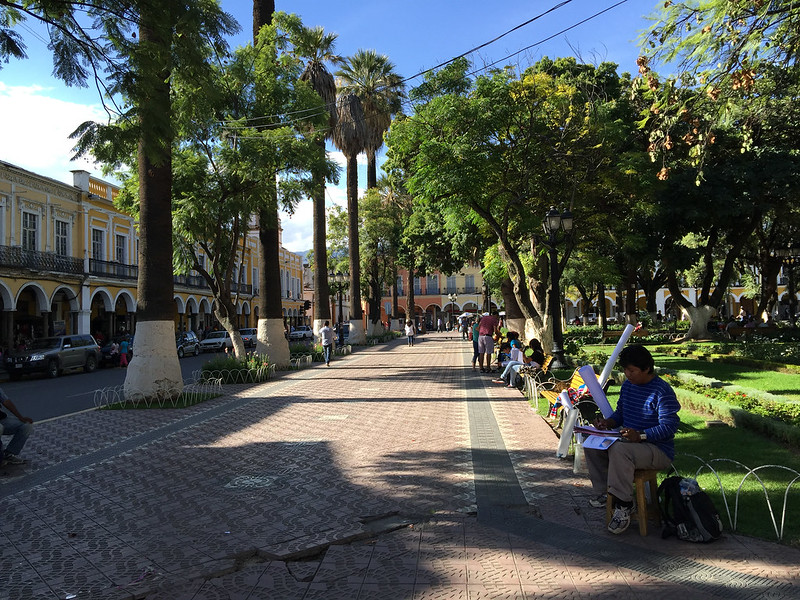
Image via Jan Beck
What to do in Cochabamba, Bolivia
Tour the Convento de Santa Teresa. Check out the views from the roof of this beautiful old convent building.
Visit Palacio Portales. This over-the-top yellow house was built in 1927 by tin baron Simon Patino. It’s a great example of what Bolivia used to be like in its golden age.
Ride the teleferico to El Cristo de la Concordia. Apparently this Christ the Redeemer statue is even bigger than the one in Rio (by 44cm, at least) – but the view of Cochabamba from here is pretty great.
Climb Cerro Tunari mountain. A day trip into the Cordillera Tunari allows you to climb up to 5000m above sea level. Be sure to go with a guide as parts of the climb are pretty technical.
Stay at Cabana Las Lilas hostel. Even if Alex, the incredible manager at Las Lilas, hadn’t saved us from the protests, I’d still be singing this hostel’s praises. There’s a big common area with a fireplace, pool table and book exchange corner, and a huge garden and swimming pool out back. Many of the guests here had extended their stay and we found it hard not to do the same.
Take a weekend trip to Parque Torotoro. Use Cochabamba as a base to visit the nearby dinosaur park – the bus ride takes six hours from the corner of Avenidas Republica and Barrietos to Torotoro Village (and it’s a bus decorated with dinosaurs!).
Book a Bed at Cabana Las Lilas Hostel Here!
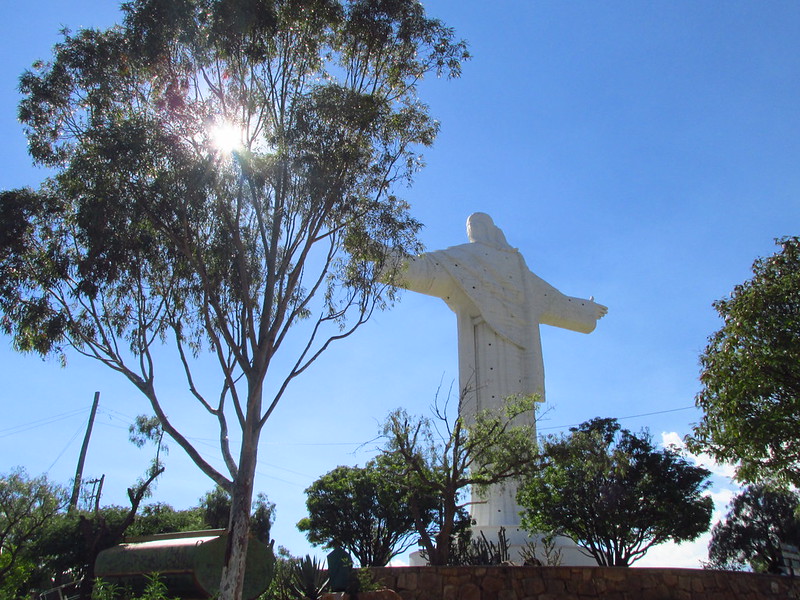
Image via Eduardo Ruas
Follow the dinosaurs in Torotoro National Park
Torotoro Park is like the land that time forgot. Torotoro is most famed for the prehistoric dinosaur tracks which have been preserved in the rock for hundreds of millions of years – but the geology of this part of Bolivia is equally fascinating.
There are canyons, caves, waterfalls and mountains, all perfect for hikers, climbers and general all-round adventurers. I was somewhat forced into going caving, and although I didn’t exactly relish the prospect of crawling for ages with a vast expanse of rock above my head, once I’d done it I was pretty proud of myself!
What to do in Toro Toro National Park, Bolivia
Pay the entrance fee. To enter Parque Toro Toro, all visitors have to register at the Toro Toro Tourism office in the town’s main square and buy an entrance ticket (nationals: Bs. 20, foreigners: Bs. 30).
Catch a jeep into Torotoro Park. Hiring a guide is mandatory: we hired one along with six other backpackers we’d collected from outside the tourist office. He drove us all around the park in his jeep, which was a bumpily enjoyable way to experience Torotoro!
Follow the dinosaur tracks. The closest tracks are near the village on the other side of the river, behind a locked fence. There are plenty of other tracks around the park, and your guide can explain what dinosaur species made each set.
Ciudad de Itas. A set of bizarrely shaped caverns with equally odd acoustics, where you can also go scrambling up boulders.
Cañon de Toro Toro. This huge gash in the rocks plummets more than 250 metres, and is equally stunning seen from the top and from deep down inside.
Umajalanta Cave. In Quechua, it translates as ‘water lost in the darkness of the deepest earth’ – and it’s a pretty apt name, because Caverna de Uma Jalanta is one of the longest (4600m) and deepest (164m) caves in Bolivia. It goes about 118m under sea level, and tourist groups usually spend two hours journeying through the cave’s rock faces, narrow tunnels, stalagmites, stalactites, blind fish, and underground waterfalls. For the more claustrophobic visitors (like me), there’s an approximately eight-metre-long section of narrow, squeezable space.
NB: There’s no cash machines in Torotoro Village, so make sure you have enough cash for food, accommodation and activities before you arrive.
Find Your Torotoro Hostel Here
Read more: Facing my Fear of Heights & Small Spaces at Torotoro National Park
Relax in Copacabana, Lake Titicaca
At 3,812m above sea level, it’s hard to exert that much energy in Copacabana – which is perfectly acceptable in this chilled town by the water.
Lake Titicaca itself is sacred: the Incas believed it was the birthplace of the Sun, and duly built a number of temples to celebrate their gods.
Most people come here and head straight towards Isla del Sol, but Copacabana is worth exploring too. Take a day or two and relax!
What to do at Lake Titicaca, Bolivia
Hike up to the top of Cerro Calvario. This is a sacred pilgrimage for many Bolivians, which explains the candles and markers which line the edge of this lookout point. There are also a number of crosses, part of the Stations of the Cross: to follow the route properly, start in town at the Cathedral of the Virgin of Copacabana, and climb the long flight of steps up the hill until you see Copacabana laid out in front of you.
Go on lots of walks. The area has plenty of other places to wander. We initially struck out for the little village of Yampupata but didn’t make it because of the combined heat, sun, and lack of water.
Don’t forget the suncream. Lake Titicaca has very little shady spots so keep drinking water and slathering on the sunscreen!
Hire a bike. Riding along the water front is a lovely way to spend a few hours.
Chill at the water’s edge. Plenty of restaurants and cafes dotted along the front. Sit out here with beers and watch the sun go down. It’s got a weirdly beach-esque vibe despite being a lake!
Eat fondue at La Cupula’s restaurant. This hostel/hotel has an on-site restaurant which serves the most delicious food – including a cheese fondue with actual Gruyere cheese (not exactly easy to find in South America!) and a chocolate fondue for dessert.
Stay at La Cupula Hostel. If you’re looking for somewhere to treat yourself, La Cupula is the perfect place. The hostel’s individual cabins are all designed differently, and situated at the end of a winding pathway on a rising slope of manicured garden above the lake – ours was fully circular with a wood burner and skylight to see the stars through.
Book Your Copacabana Hostel Here
Read more: The cheese and chocolate co-operatives of Salinas de Guaranda, Ecuador
Hike across the mythical Isla del Sol
This peaceful island, just a short boat ride from the shores of Lake Titicaca, is around 70 square kilometres and is covered with more than eighty archeological ruins built by the Incas in the 15th century.
There are three different central communities living on Isla del Sol (about 800 indigenous families in total), who all have differing opinions about how island tourism operates. Since 2017, the north of the island has been closed to visitors, so make sure you check accessibility before heading out.
You can easily catch a boat from Copacabana to Isla del Sol – boats run twice a day at 8:30 a.m. and 1:30 p.m, returning at 3:30 p.m. and 5:00 p.m. Getting to Yumani takes about 1.5 hours, and the ticket costs 25 Bolivianos one-way or 40 Bolivianos for a return.
NB: Verify the boat times when you buy your ticket as schedules do change!
What to do on Isla del Sol, Bolivia
Climb the Inca stairs.
Enjoy being in a car-free zone. There are no vehicles on Isla del Sol, so all exploring has to be done on foot via the network of trails which criss-cross the island. Although the island slopes significantly in places, lots of the trails are relatively flat. Bear in mind that the altitude can make it tough going for some people.
Hike across the island. Start walking from Yumani, the biggest and most developed settlement, and head towards Cha’lla on the central east coast. Cha’llapampa, on the northern side of the island, is where the gold museum and most of the ruins are located. Crossing the entirety of Isla del Sol takes approximately three hours, so you can walk the entire island in a day.
Eat a lunch of fresh trout from the lake. Ever since the fish was introduced into the lake in the 1930s, fried trout has become a very popular local speciality dish, and all the local restaurants serve it.
Stay the night in simple accommodation. Although it’s possible to see Isla del Sol on a day trip, it’ll mean rushing around the island to catch the last boat which isn’t too relaxing. Most of the restaurants and hotels are in Yumani, and it’s probably best to book a bed before your arrival. I stayed at Hostal del Sol and it was basic but more than enough for a night’s stay.
Watch the most incredible Bolivian sunset. Isla del Sol is famous for its spectacular sunrises and sunsets, the latter of which lights up the peaks of the Cordillera Real mountain . What more could you want?
Book Your Isla del Sol Hostel Here

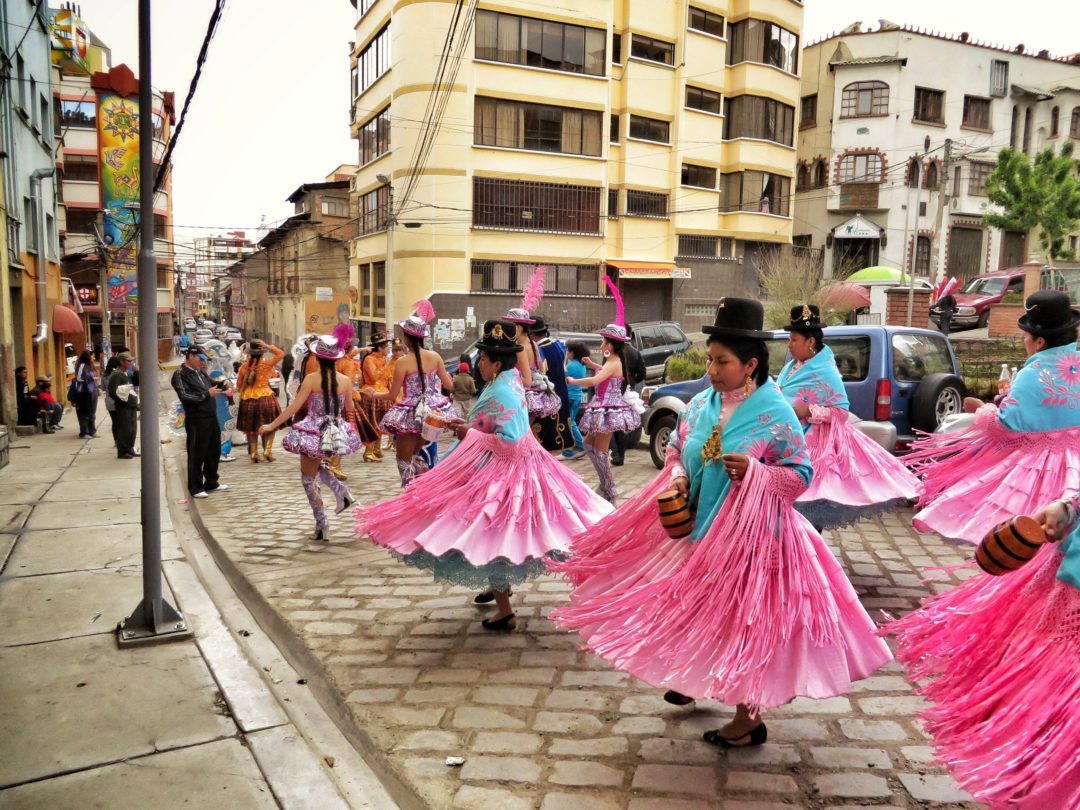
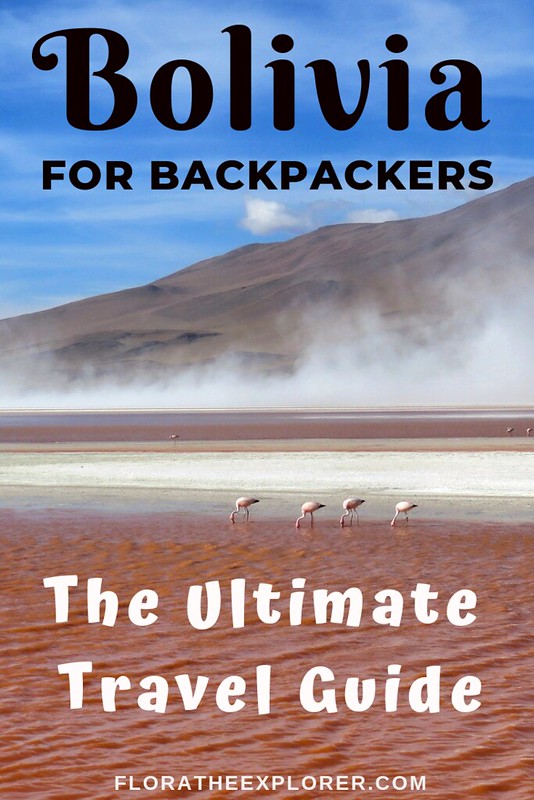
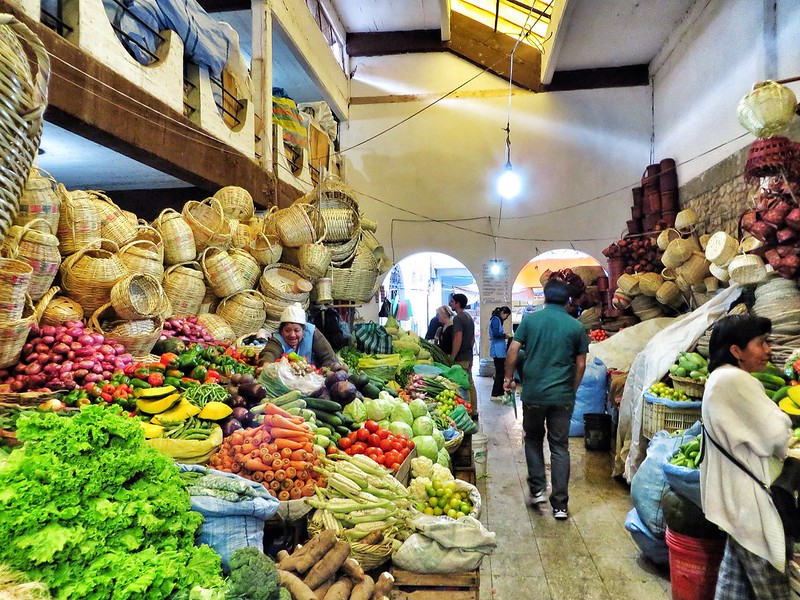
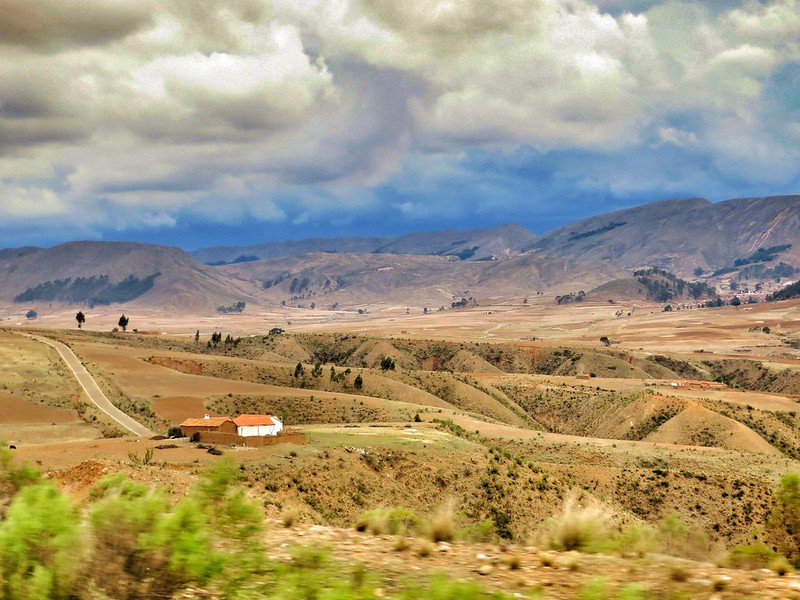
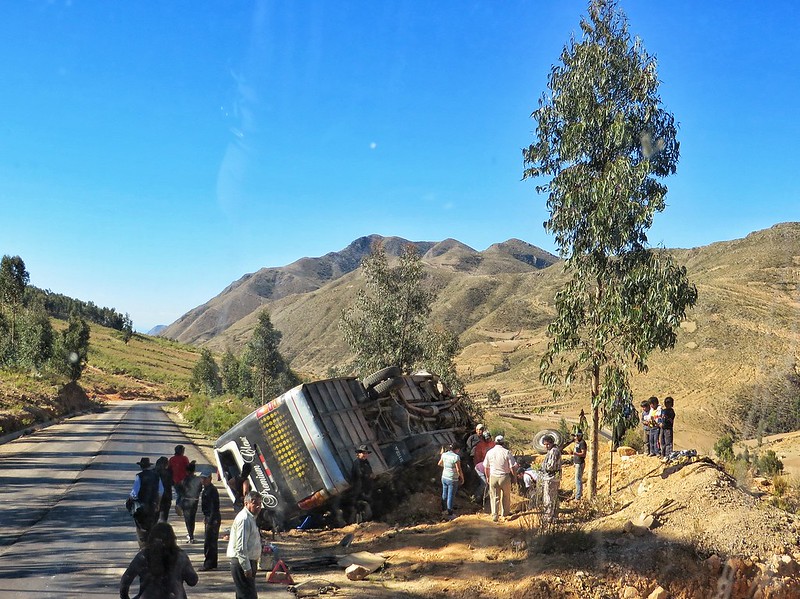
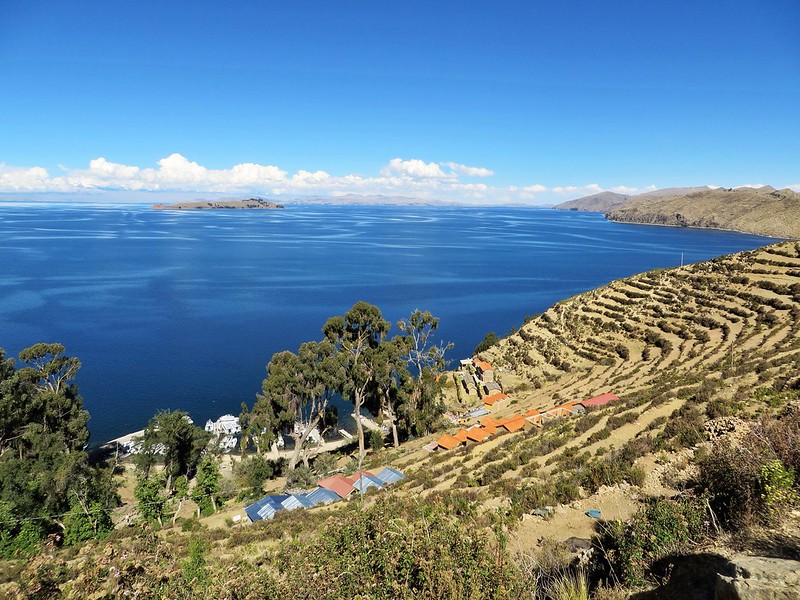
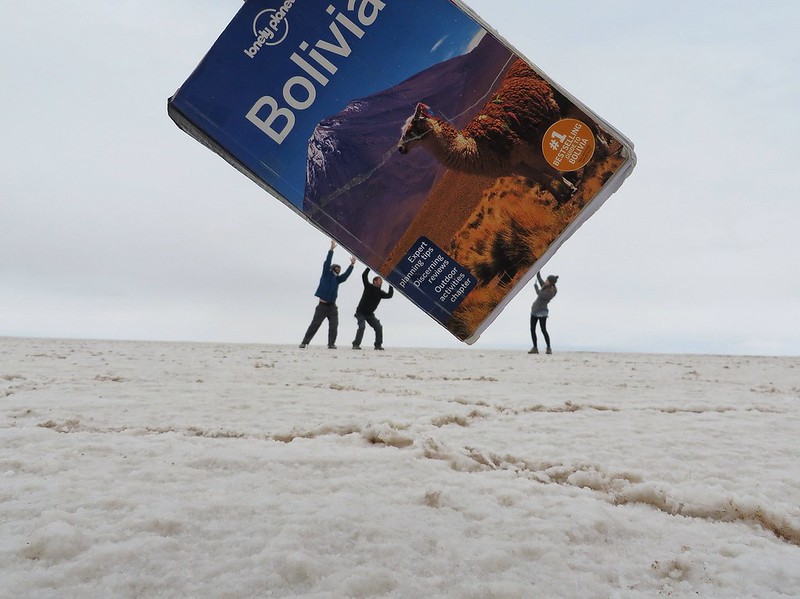
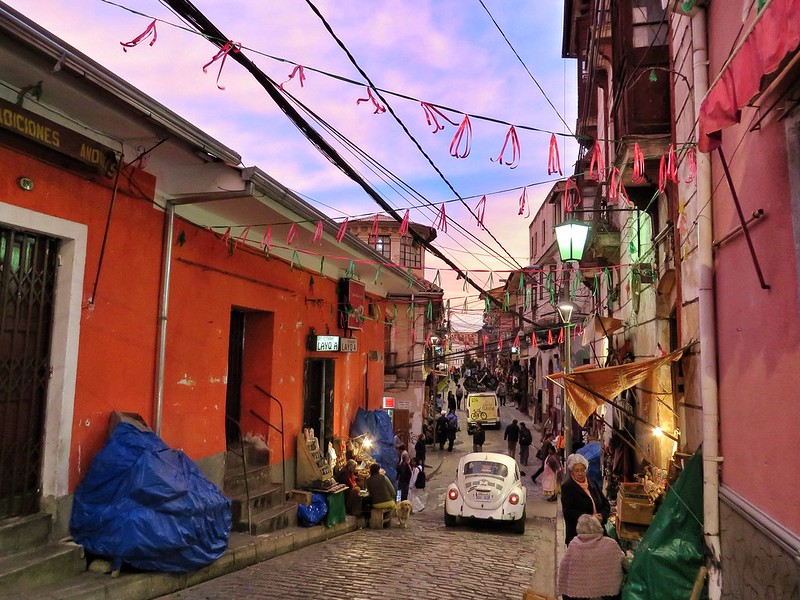
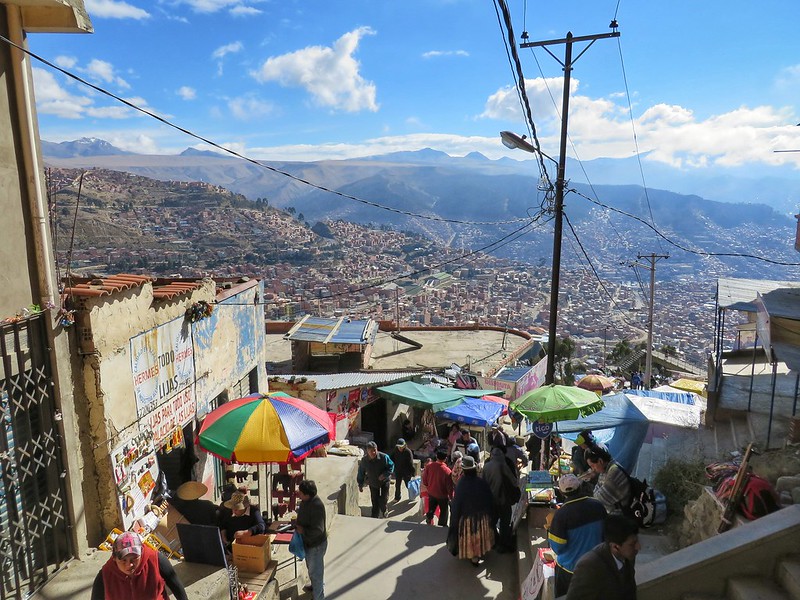
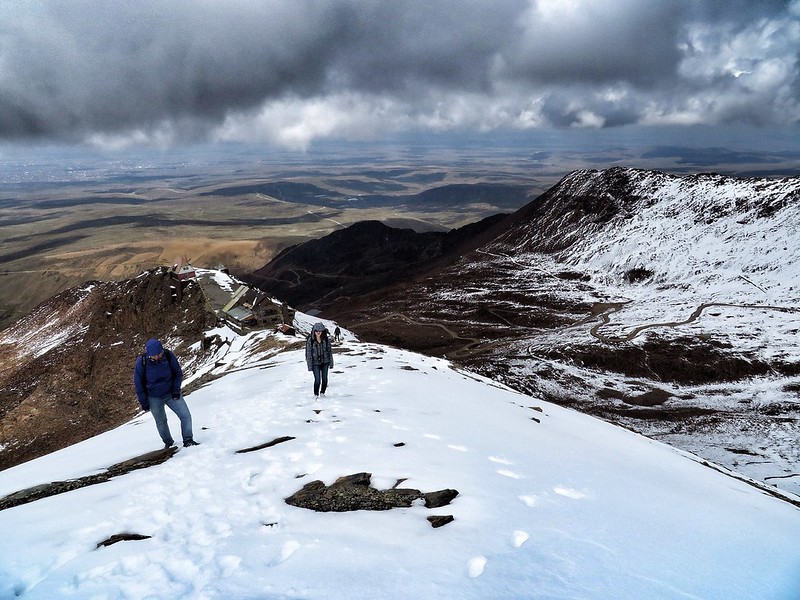
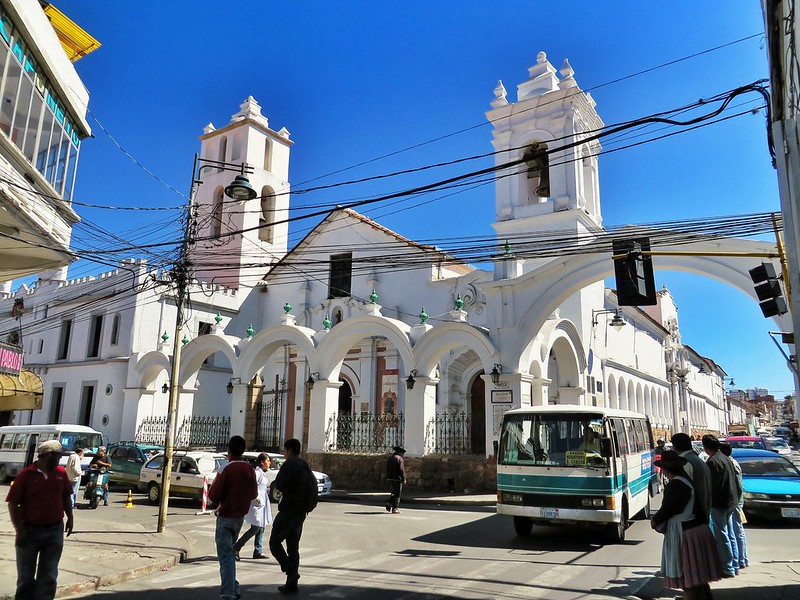
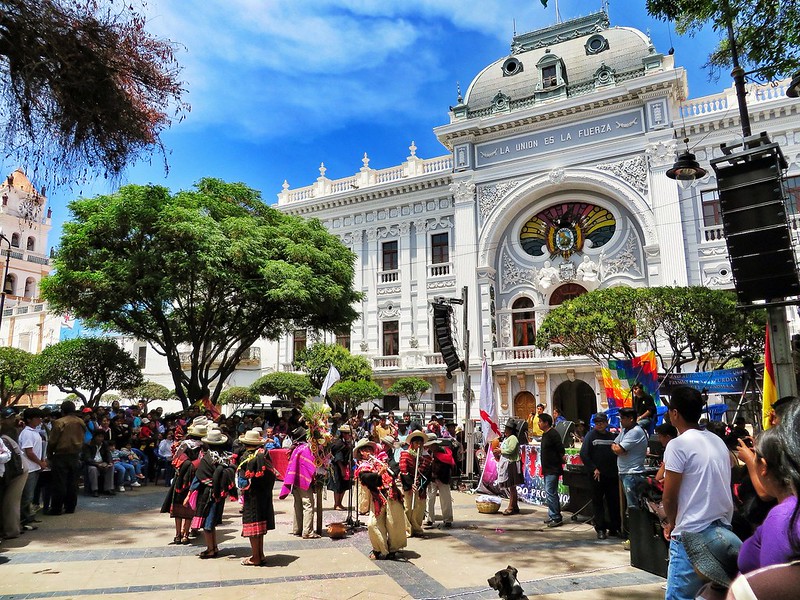
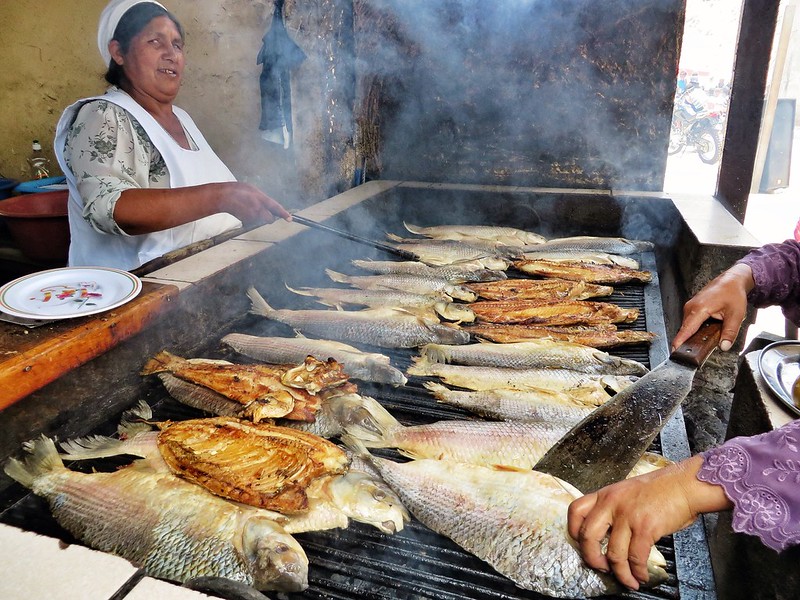
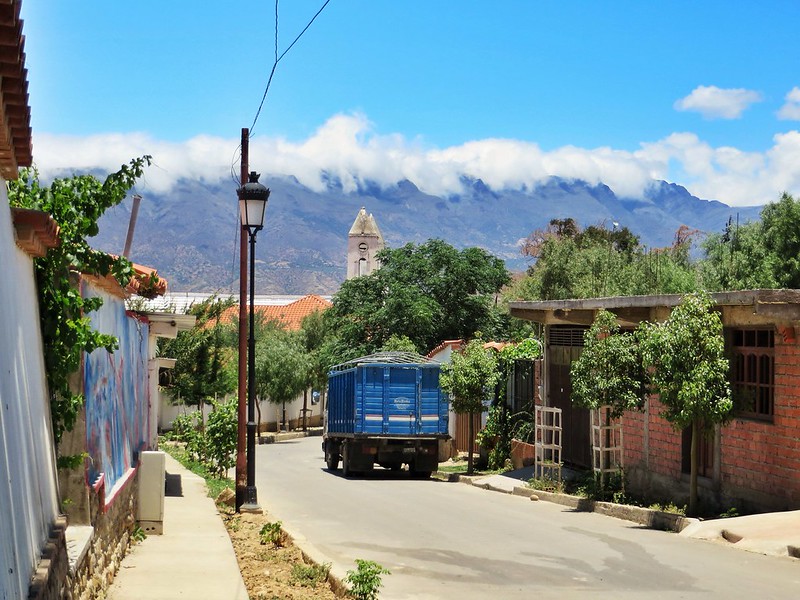
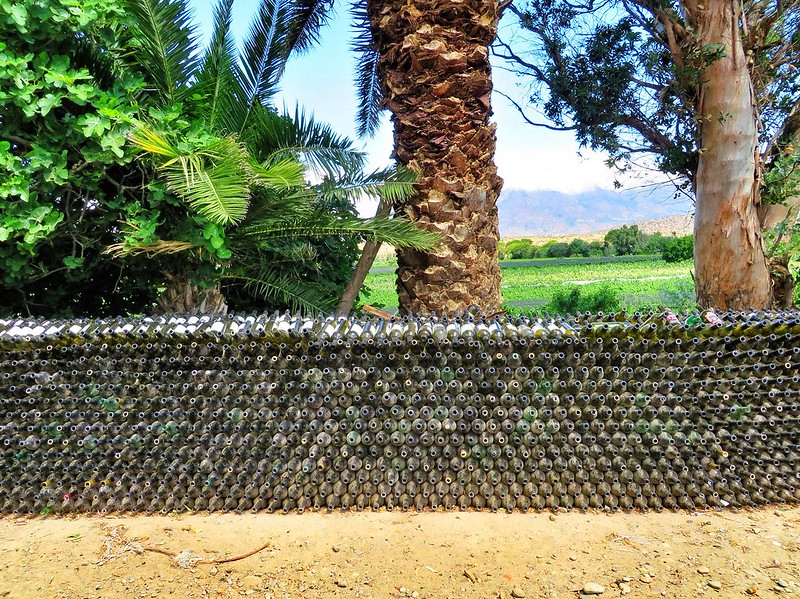
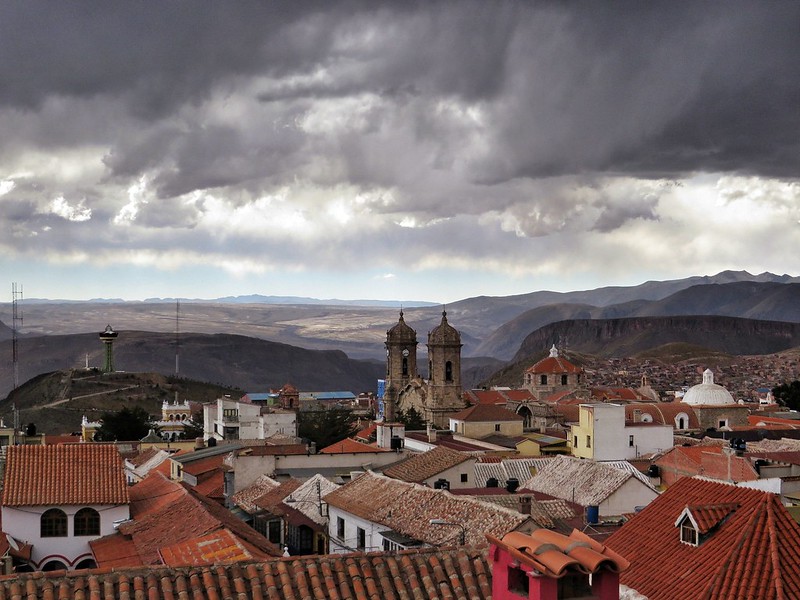
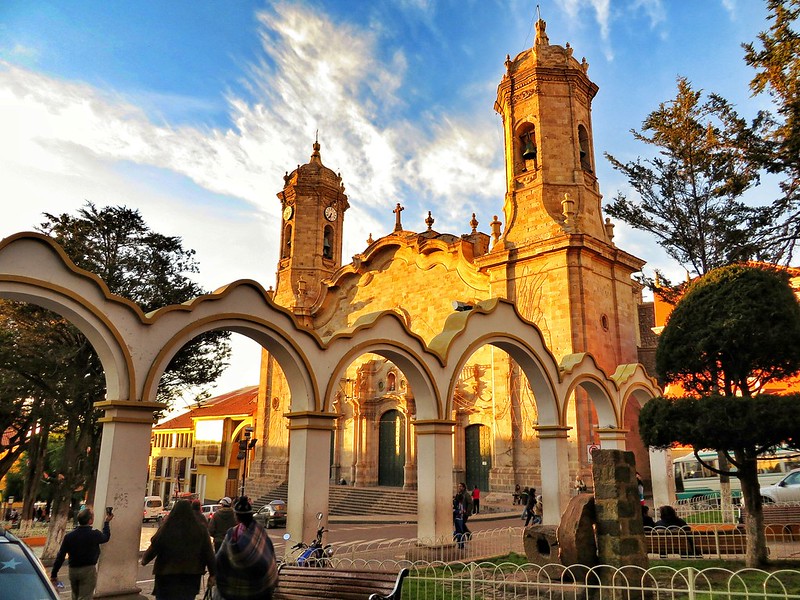

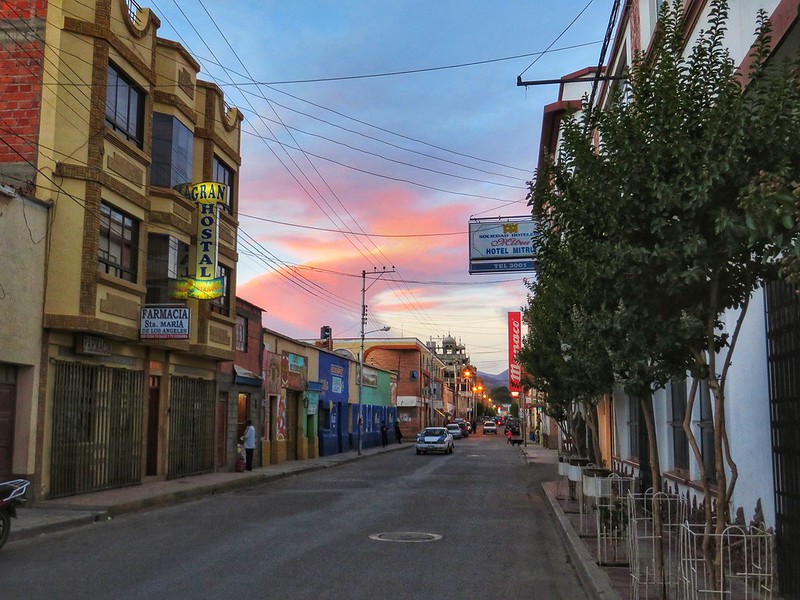
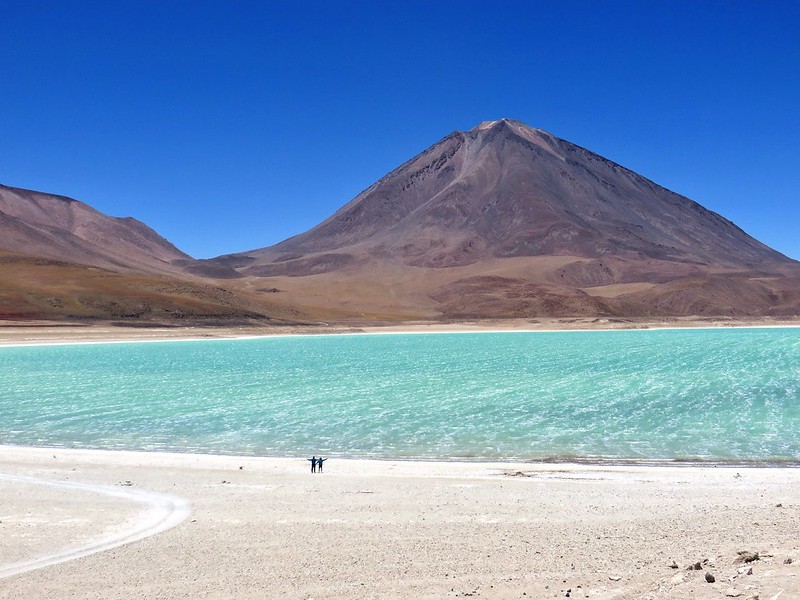
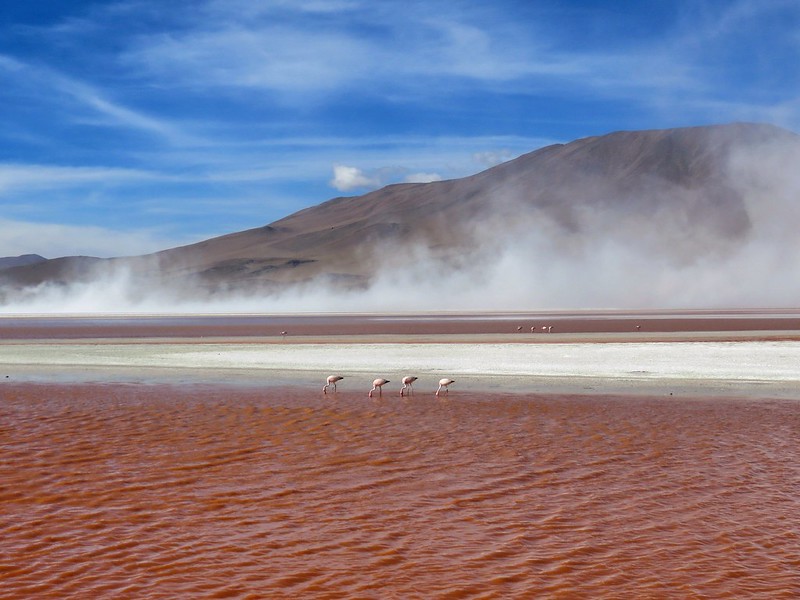
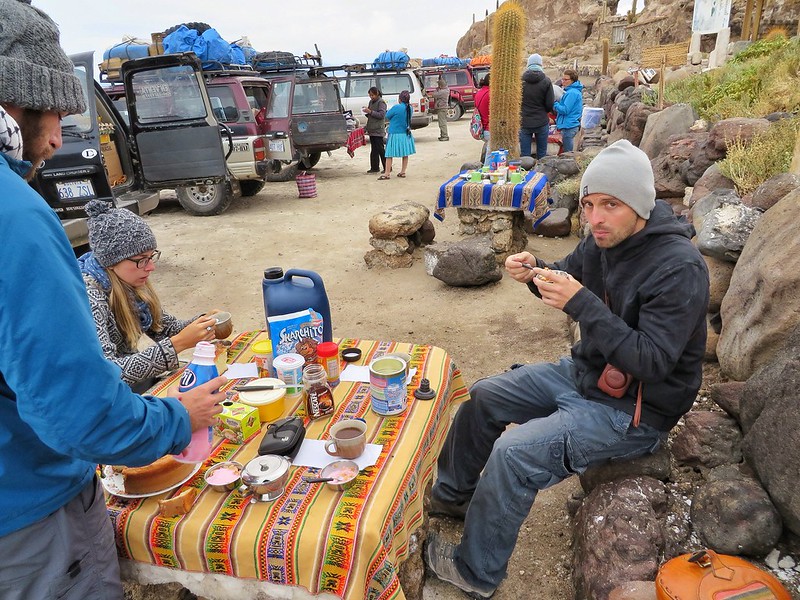

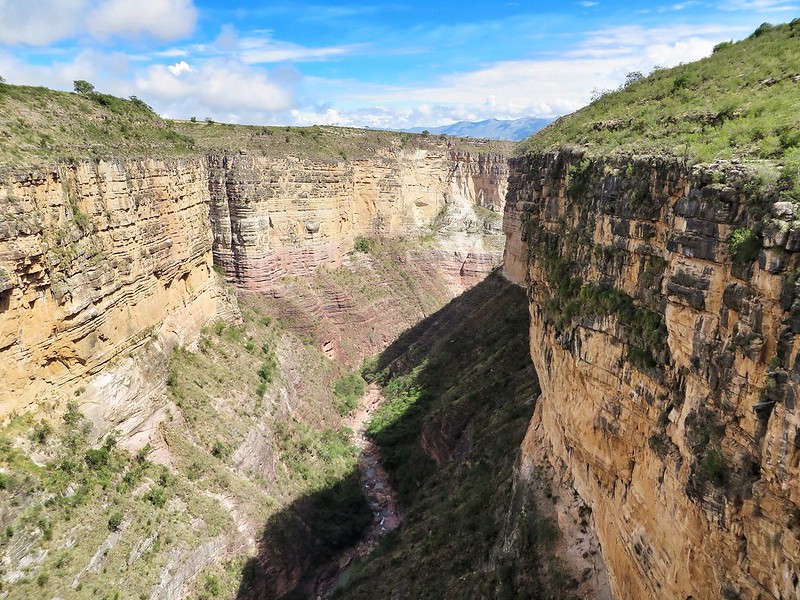
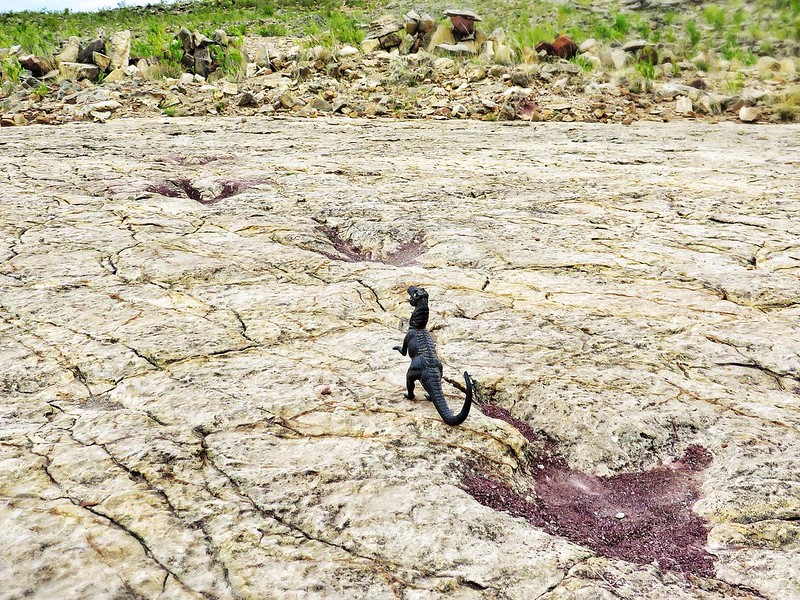

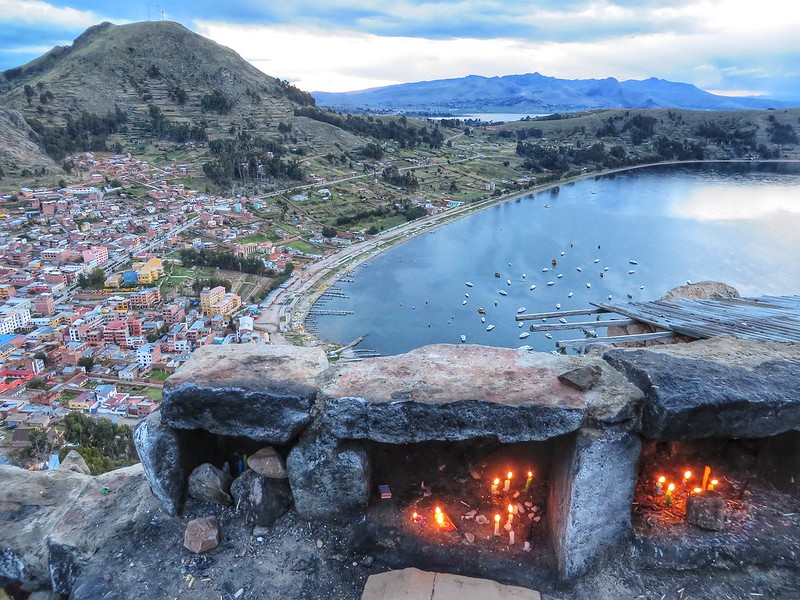
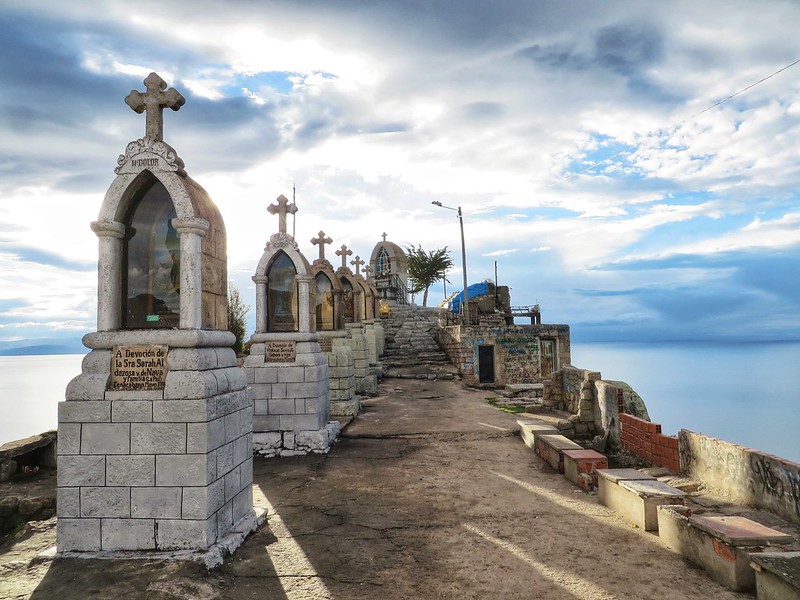
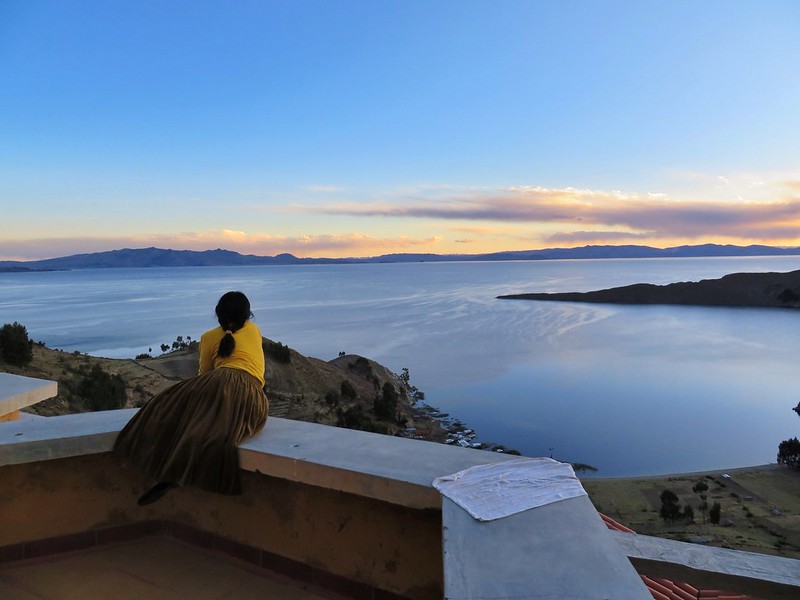


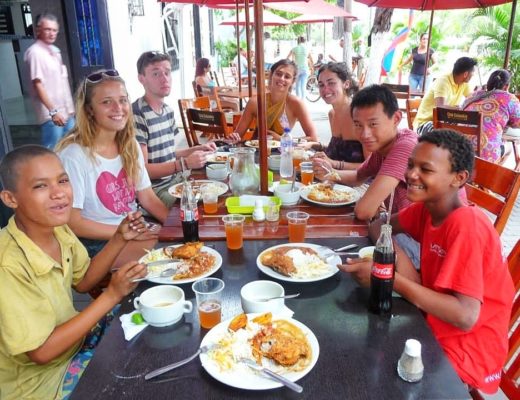
13 Comments
Kashlee
March 2, 2019 at 3:29 amThis is hands down the BEST guide I have ever seen for Bolivia! My gosh girl, during your 3 months there you really immersed yourself into everything the country has to offer! (I’m envious!!) I have this bookmarked for future reference! Loved your first -hand insight
Flora
April 1, 2019 at 4:34 pmThat’s so lovely to hear Kashlee! Bolivia is such an incredible country so I’m glad the article does it justice 🙂 I hope you find this info useful when you eventually travel there!
Queenie Mak
March 2, 2019 at 7:25 amI agree – this is the best Bolivia guide I’ve seen! I backpacked in Bolivia many years ago and only spent a week at the most. I wish I stayed much longer and see everything you did! Thanks for sharing such a great guide!
Flora
April 5, 2019 at 8:36 pmThanks so much Queenie! Do you think you’ll go back to Bolivia eventually? I still feel like there was tons I missed out on..!
Nicola
March 2, 2019 at 8:07 amCongratulations to this amazing guide. This is what people look for. Even though I am not a backpacker, your tips are fantastic. Thanks so much for sharing.
Flora
April 5, 2019 at 8:39 pmThanks Nicola, glad you enjoyed it! And this guide isn’t just for backpackers – you could definitely still explore Bolivia by following it :p
GallopAroundTheGlobe (@KiaraGallop)
March 2, 2019 at 8:57 amSuch a detailed, comprehensive guide! How long did it take you to write it??
I loved reading it because it brought back memories of the 6/7 weeks I spent in the country, and you describe all the beauties and struggles exactly as I remember them 🙂
Flora
April 5, 2019 at 8:41 pmThanks Kiara! I won’t lie, it took me a very long time to write – but it’s really satisfying to have finally finished! I’m glad it brought back some good Bolivia memories for you too 🙂
Meredith Fulford
March 2, 2019 at 4:54 pmTruly amazing guide! So much helpful, no B.S. information here. You have me wanting to book a flight to la Paz ASAP! Bookmarking this one for later!
Meredith
The Longest Weekend
http://www.thelongestweekend.co
Flora
April 5, 2019 at 8:47 pmAwesome, Meredith! Let me know when your flight is booked :p
SavvyExploring
March 2, 2019 at 4:57 pmGreat guide! It is incredible how much variation there is to Spanish, glad to hear that it is a bit easier here. Was the food pretty similar across the country or was it regional with some common dishes?
Flora
April 5, 2019 at 8:51 pmThere’s definitely some variation in different regions but all my favourite snack foods (mainly salteñas) seemed to appear throughout Bolivia – which I was really happy about :p
theworldwidejweb
September 26, 2019 at 4:46 amAWESOME info here, so authentic. Wish I had time to do read more in-depth at the moment, but I’m definitely saving this to revisit!